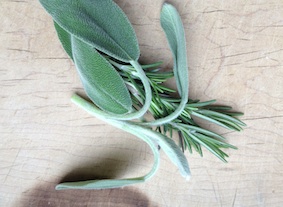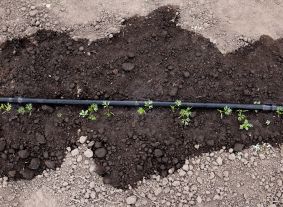Tips for Growing Herbs Indoors
Views: 10841

It’s the far side of November—just days away from Thanksgiving—and I find myself nearly completely winding down from active gardening duties.
The official rules for our community garden state that all plots should be cleared by November 30. The procrastinator in me yawns, stretches, and turns over to take a nap. I have plenty of time.
But, as my stock of fresh herbs diminishes—both in the garden and in the farmer’s markets—I am toying with the idea of an indoor herb garden for the winter.
Starting an Indoor Herb Garden
“Garden” might be too rich of a word. I’m thinking more along the lines of a few plants potted in some decorative containers. No big deal, right?
It is a big deal, actually. Sure, I have other potted plants—a few philodendrons, some African violets, even an open-topped terrarium with ferns and begonias—but I don’t have herbs.
My previous living quarters weren’t conducive to growing herbs due to one major issue: a lack of light. Except for an attempt to overwinter a beloved rosemary a few years ago, I’ve never had success with indoor herbs.
But now I have a new home, plenty of light-filled windows and a renewed commitment to making herbs work. Let’s talk about what it takes to successfully grow herbs indoors.
Water and Sunlight for Indoor Herbs
Natural sunlight is key. My new home has plenty of large windows. While eastern and southern exposures have limited light, I do have plenty of light streaming through large northern-facing windows. Six to eight hours of natural light should do the trick.
Proper watering practices are crucial, too. Plants just don’t use as much water in the winter months, because the temps are a bit cooler and there is less sunlight. So really, overwatering is the killer, not underwatering.
Another rule of thumb: water the pot only if the surface of the soil feels dry. If it feels moist, it’s fine.
Temperature and Humidity
Luckily, our new home stays warm on its own, with the help of some fancy engineering.
Same goes for the tightness of the building. As temperature and humidity levels dip both outside and inside a home during winter, they can really do a number on indoor plants—especially herbs, which do well with warm, moist air.
The rule of thumb for indoor plants—including herbs—is that if you are comfortable with the temperature, your plants are, too. So keep that thermostat between 65F and 72F.
As for humidity, you can boost air moisture levels simply by placing your herb pots on a tray of pebbles and filling that tray with water. As the water evaporates, it creates a bit of an envelope of moist air around the plant. Truly, it works and it keeps the plant happy.
Fertilizing
Do it. That will be my main issue. I just fail to fertilize.
Give your herbs some fertilizer every two to four weeks. A balanced general houseplant fertilizer should do the trick. There should be application frequency directions on the package.
Pests and Indoor Herbs
Keep an eye out for pests—winged (aphids), legged (mites), fuzzy (mealy bugs), or otherwise. Often they come in with the plant, especially if you bring it in from an outdoor herb garden or from a nursery. When you check your soil’s moisture levels, turn over a few leaves and inspect for bugs. If you notice a few, manual removal (i.e., picking them off by hand) may work. Or, find yourself a good horticultural oil soap to spray on them.
Meet Ellen Wells
When you’re raised on a farm, you can’t help but know a thing or two about gardening. Ellen Wells is our expert on edible gardening.…
Ellen's Recent Posts

Asparagus






